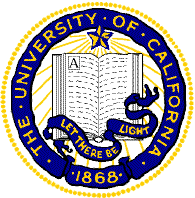CSPA |
| Your 501(c)(3) tax deductible cash donations are desperately needed if the fight for our fisheries is to continue. Read how you can donate! |

 More News
More News
![]()
 A "Neutral" scientific view: Limited restrictions on stocking are needed to conserve California's native fish and amphibians
A "Neutral" scientific view: Limited restrictions on stocking are needed to conserve California's native fish and amphibians
by Roland A. Knapp
Roland Knapp is a research biologist at the University of California Sierra Nevada Aquatic Research Laboratory in Mammoth Lakes and has conducted research on California’s mountain lakes for more than a decade. His opinions are based on solid scientific research rather than emotions or political agendas.
December 17, 2008 -- California’s angling community has voiced numerous concerns about an agreement recently reached by the California Department of Fish and Game, Pacific Rivers Council, and the Center for Biological Diversity that will limit stocking of nonnative trout in some State waters in 2009 while the Department prepares an environmental impact report (EIR) (See, for example, Tom Stienstra, Trout plants halted: it’s a load of bullfrogs, Chronicle November 30, 2008).
The purpose of the agreement is not to rob the public of opportunities to fish, but rather to ensure that undue harm is not done to California’s native fish and amphibians while the Department prepares an EIR (due in January 2010). The agreement specifically allows a majority of stocking to continue, including stocking in all large reservoirs, stocking by private businesses, and stocking in areas where the Department knows there are no sensitive native species present. This is a reasonable compromise that balances the interests of anglers with the need to reduce impacts to native species.
Although stocking will continue in many waters across the State, there will be some lakes, reservoirs, and rivers that will not be stocked in 2009 due to the presence of sensitive native species or a lack of recent survey information. It is not true, however, that these waters will never be stocked again. That will depend on the results of the Department’s EIR and whether they determine that these waters can be stocked without contributing to the extinction of native species.
Results from decades of research clearly indicate that stocking of trout can have dramatic impacts on native fish and amphibians. For example, the California golden trout, our State fish, is at severe risk of extinction because of predation by introduced brown trout and hybridization with introduced rainbow trout. Likewise, species like the mountain yellow-legged frog, Cascades frog, and long-toed salamander rarely survive in water bodies where nonnative trout have been stocked.
Stocking of nonnative trout is also a potential vector of diseases like the amphibian chytrid fungus that is having devastating consequences for many native amphibians. In addition, trout stocking can result in the inadvertent introduction of harmful invasive species like the New Zealand mud snail, a species found recently at the Department’s Hot Creek Hatchery.
The fact that stocking has been ongoing for more than 100 years in no way means that it is benign. Indeed, in recent years the Department itself has worked to reduce the impacts of stocking in the High Sierra, where they have surveyed for sensitive species and modified stocking practices to avoid habitats that contain these native species. As a result of this proactive approach, these areas are exempt from the interim stocking restrictions.
The EIR will provide the public with their first opportunity to take a careful look at all aspects of the Department’s stocking program. The paradigm that more fish stocking makes for better fishing underlies much of the stocking program and deserves particular scrutiny. Recent research conducted in the High Sierra shows that most stocked lakes actually harbor self-sustaining trout populations and that ongoing stocking (conducted at considerable expense) therefore has no effect on trout densities. So, in these hundreds of lakes stocking is just a waste of angler dollars. Similarly, studies in Montana conducted in the 1960s and 1970s indicated that stocking of catchable trout into rivers and streams actually caused decreases in overall trout densities. Based on the results of these studies, in 1974 Montana stopped all stocking of flowing waters (to large protests from anglers) and the result was dramatic increases in trout populations.
Clearly, a long, hard look at California's fish stocking program is long overdue.